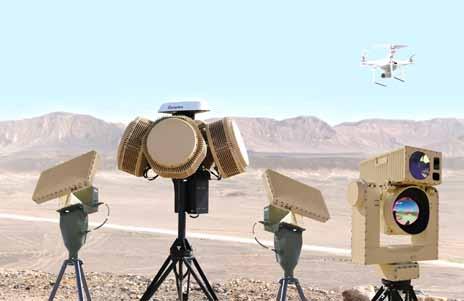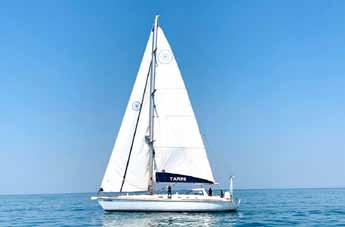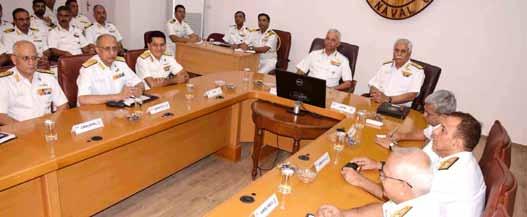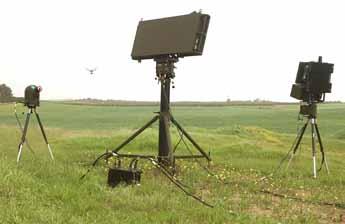
4 minute read
SalamAir selects Commsoft’s OASES
°C to +45 °C and altitudes of up to 9,000 m. It has an ability of ground and in-flight restart of up to 4,000 m with maximum speed of 0.6 M. The newly developed engine PBS TJ150 is based on the most commercially successful model PBS TJ100 turbojet engine (1,250 N thrust). It is a single-shaft engine composed by a starter generator integrated in the radial compressor impeller, one axial turbine,
SalamAir has chosen Communication Software’s OASES engineering and maintenance platform for its growing regional airline.
Advertisement
The deal, which was signed on New Year’s Eve, autonomous oil system and digital control system. To this day almost 1,000 units have been delivered to customers.
PBS Turboprop and Turboshaft Engines
PBS is also a manufacturer of turboprop and turboshaft engines designed for MALE UAVs, unmanned helicopters and small experimental aircraft. The PBS TP100 and TS100 develop max. power of 180 kW. Low weight, small installation dimensions, extended intervals between overhauls (TBO) and high efficiency at high altitudes are the competitive advantages of PBS turbine engines. They are able to achieve flight levels of 9,000 m with a maximum starting height of 6,000 m.
Auxiliary Power Units
Auxiliary Power Units (APU) which are used all around the world, both in defence and civil airplanes and helicopters is also one of the main product lines of PBS. They operate as air generators for starting systems and as emergency power and hydraulic sources. Their main advantages are simultaneous supply of electric power and compressed air, continuous operation for up to 6 hours, long service life and ability to start and operate in altitudes of up to 6,000 m.
was Commsoft’s seventh new OASES contract in 2019. It will see the Omanbased airline using several OASES modules, all of which will be implemented onCommsoft’s private cloud. These include its core,
airworthiness, planning, materials, line maintenance control and warranty modules. The first low-cost carrier based in Oman, SalamAir was established in 2016 and now serves 27 destinations. Its current fleet comprises three Airbus A320-214 (CFM56 engines) and five Airbus A320-251Neo with a further A320Neo aircraft being planned. Implementation will start with the materials module in the next month and CAMO implementation will commence as new aircraft arrive.
The OASES implementation will start immediately with onsite implementation likely to commence in March 2020. Nick Godwin, Commsoft’s Managing Director, said:
“We are very pleased to be working with SalamAir, one of the fastest growing low-cost carriers in the Gulf region. We look forward to a rapid implementation and a long successful relationship.”
No. 47 Squadron of Indian Air Force currently stationed at AF Station, Adampur, completed 60 years of its glorious service to the nation. To commemorate the occasion, Diamond Jubilee celebrations were organised and the aerial display by the Surya Kiran Aerobatics Team, IAF vintage Flight, Air Devils and performance by the Air Warriors Drill Team enthralled the audience.
The Squadron was formed on 18 December 1959 at Air Force Station Halwara. It has operated Toofani, MiG21 FL and MiG-29 fighter aircraft. The Squadron took part in both 1965 and 1971 Indo-Pak wars and won numerous accolades. The Squadron continues to maintain its operational edge and has actively participated in Op Safed Sagar, Op Parakram and the operations post Balakot Strike in Northern sector. 47 Squadron of Indian Air Force Celebrates Diamond Jubilee
RAFAEL’s Drone Dome intercepts multiple maneuvering targets with LASER technology
In a recent demo conducted in Israel, RAFAEL’s Drone Dome C-UAS system performed interceptions of multiple drones, including maneuvering targets, using its hard-kill LASER BEAM director. The system achieved 100% success in all test scenarios. The stages of the interceptions included target detection, identification, and interception with a high-power LASER beam.
Drone Dome is an innovative endto-end C-UAS solution for securing air space from hostile drones. Fully operational and deployed globally, Drone Dome offers a modular and robust infrastructure, comprised of electronic jammers and sensors, allowing effective detection, full identification and neutralization of multiple Micro and Mini UAV threats employing its unique algorithms. One of Drone Dome’s unique capabil1ities is integrating laser technology for hard-kill capabilities. When the C4I performs a positive identification, the system allocates the target to the laser effector, which locks and tracks the target and performs hard-kill.
Drone Dome is designed to address threats posed by hostile drones both in military and civilian sites, offering advanced solutions for maneuvering forces and military facilities, critical border protection, as well as civilian targets such as airports, public facilities, or any other sites that might be vulnerable to the increasing threat of both terror and criminal drones.
Drone Dome is a member of RAFAEL’s family of active air and missile defense technologies, which includes the operational and combat-proven Iron Dome, David’s Sling, and the SPYDER family. All together they make up a suite of multi-layered solutions against a variety of aerial threats. The system achieved 100% success in all test scenarios.













